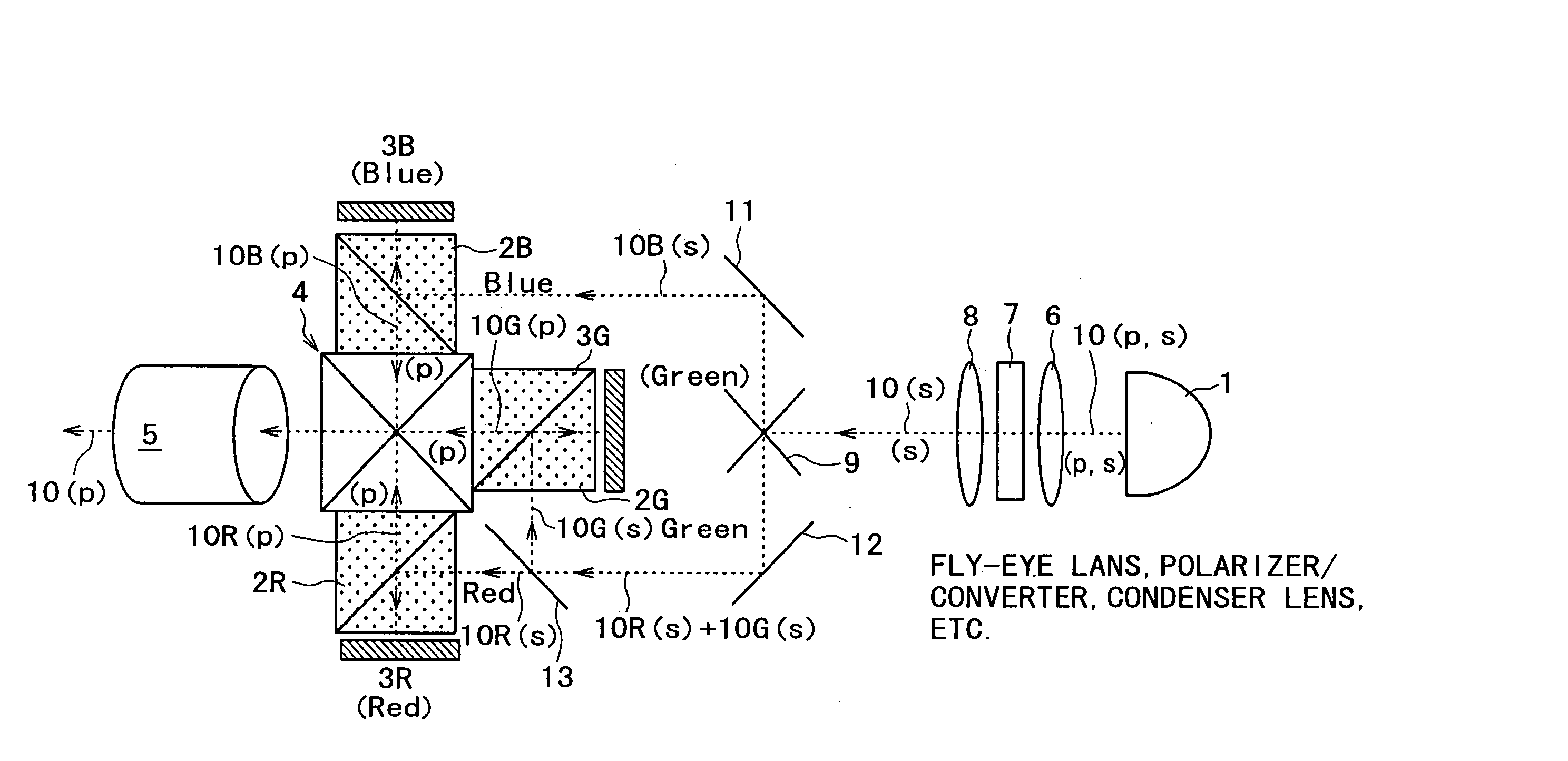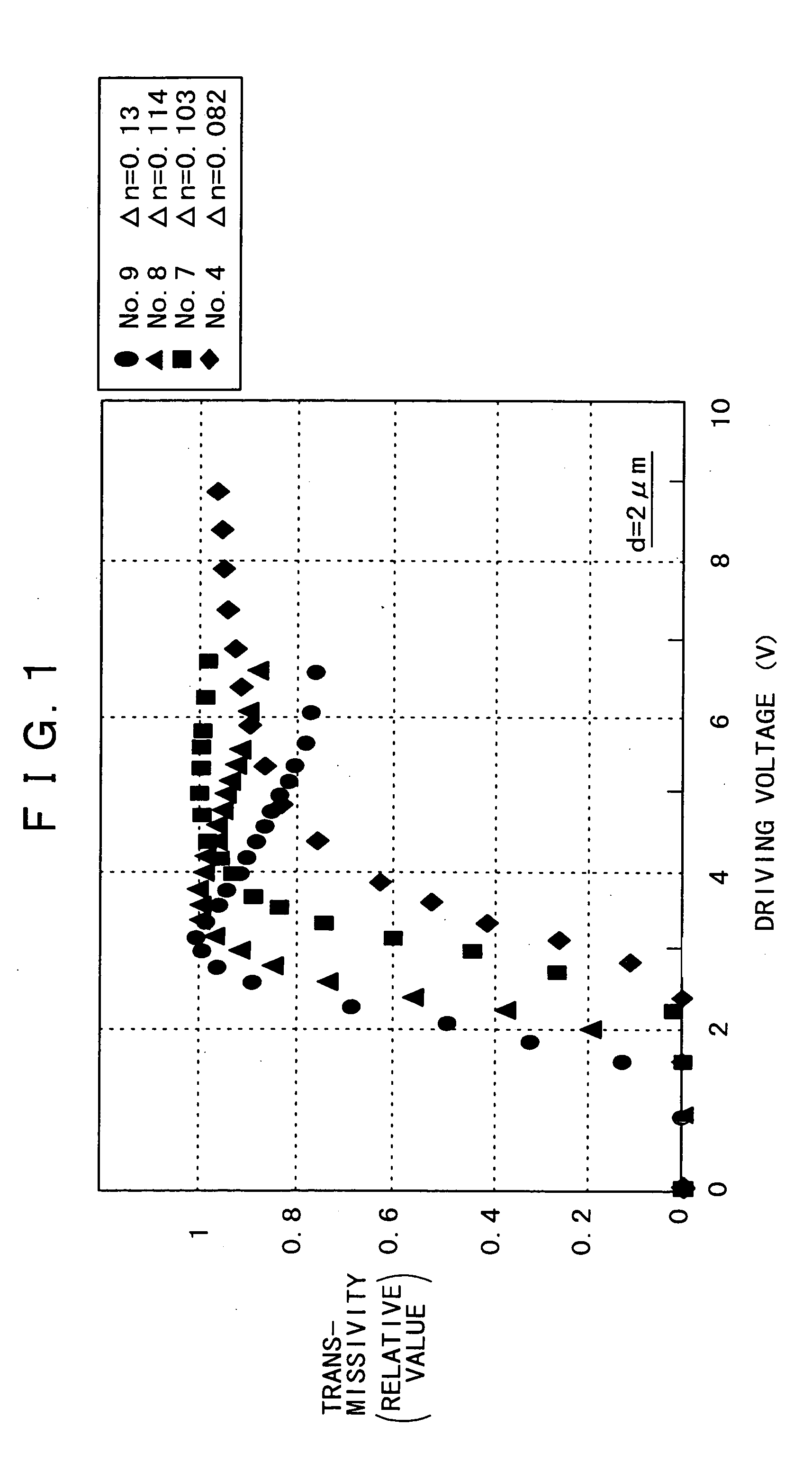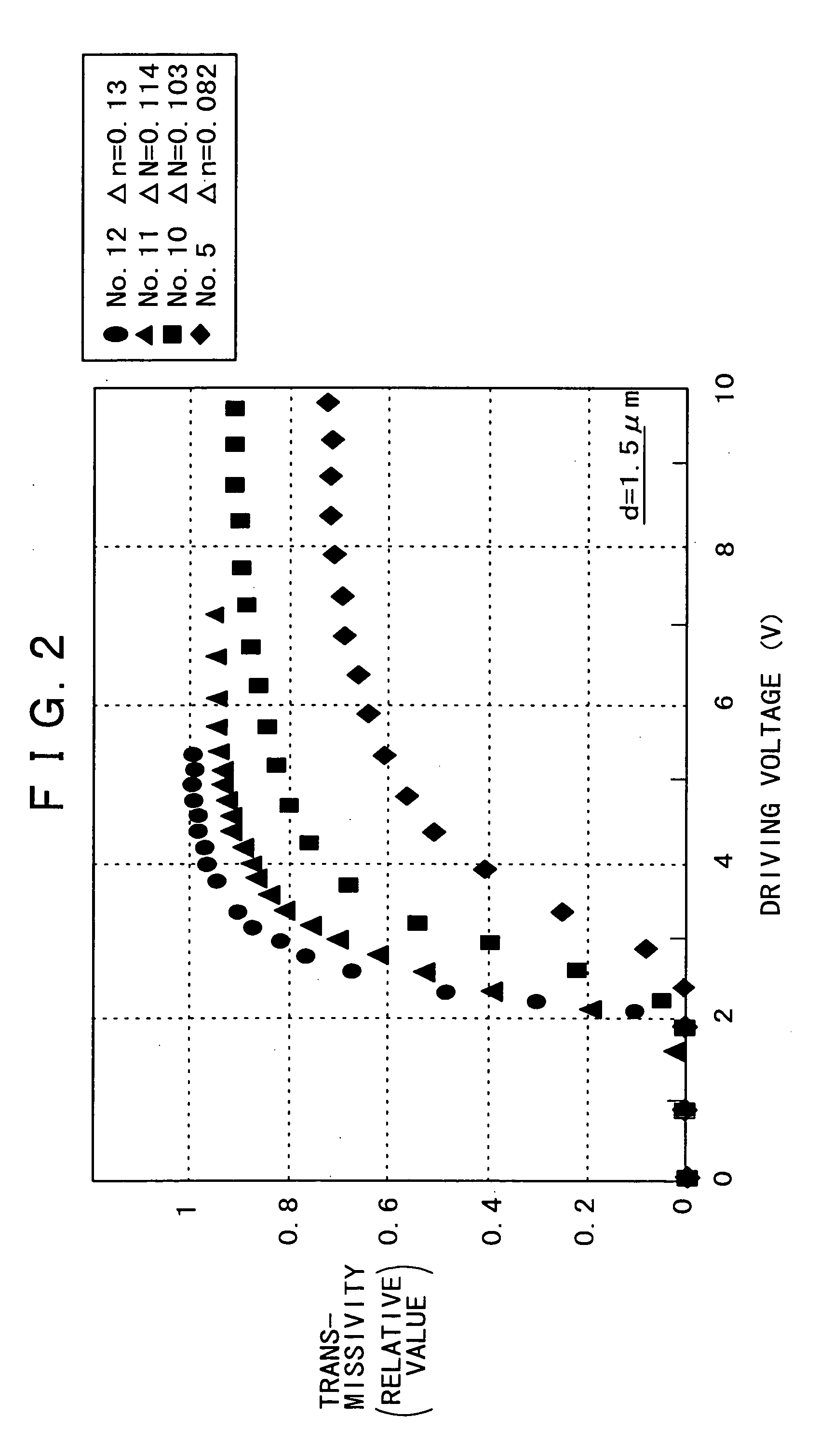Reflex liquid crystal display device, display apparatus, projection optical system, and projection display system
a liquid crystal display device and display device technology, applied in the direction of projection devices, color television details, instruments, etc., can solve the problems of low response speed of projection devices, failure to perform proper driving in ordinary driving device substrates of silicon, and high driving voltage required for saturating transmissivity. achieve sufficient transmissivity, improve driving characteristic, and facilitate saturation
- Summary
- Abstract
- Description
- Claims
- Application Information
AI Technical Summary
Benefits of technology
Problems solved by technology
Method used
Image
Examples
embodiment 1
[0092] In the same method as adopted for Comparative example 1 mentioned above, a liquid crystal orientation film of SiO.sub.2 was formed on each of a substrate with a transparent electrode and a driving circuit substrate of silicon with an aluminum electrode, and three kinds of vertically-aligned liquid crystal materials (made by Merck Ltd.,) having a negative permittivity anisotropy .DELTA..epsilon. and a refractive index anisotropy .DELTA.n of 0.103, 0.114 and 0.13 were injected between the two substrates to thereby produce nine kinds of reflex liquid crystal display devices (samples Nos. 7-15 in FIG. 5) where the liquid crystal layer thickness (cell gap) was 2 .mu.m, 1.5 .mu.m and 1 .mu.m respectively. The pretilt angle of the liquid crystal was so controlled as to be approximately 2.5.degree..
[0093] The liquid crystal driving characteristics of the devices thus produced were measured at room temperature similarly to Comparative example 1. FIGS. 1, 2 and 3 graphically show the d...
embodiment 2
[0096] The response speed relative to a rise time (from black to white) and a fall time (from white to black) was measured in each of the reflex liquid crystal display devices produced in Embodiment 1. The sum total thereof is regarded as the response speed of each device, and the result is shown in FIG. 5. The measurement was performed at room temperature. FIG. 4 graphically shows the thickness d of the liquid crystal layer as a function with regard to the device having .DELTA.n=0.13 as a representative example (samples Nos. 9, 12, 15 with d=2.5 .mu.m in FIG. 5). For comparison, FIG. 4 also shows the response speeds of the known sample No. 1 and the sample produced with d=3 .mu.m (.DELTA.n=0.082 in each sample).
[0097] As supposed from Eqs. (1) and (2), the response speed changes substantially in proportion to the square of the thickness of the liquid crystal layer. In the device of the present invention where the layer thickness d is less than 2 .mu.m and .DELTA.n is more than 0.1,...
embodiment 3
[0100] The transmissivity (black level) at a zero applied voltage (black state) was measured in the reflex liquid crystal display device produced in Embodiment 1. For systematically examining the black level changes caused in relation to the thickness of the liquid crystal layer, devices having a layer thickness of 3.5 .mu.m (samples Nos. 17-19) were produced with the aforementioned samples of .DELTA.n, and also devices having a layer thickness of 2.5 .mu.m were produced similarly, and the black-level transmissivity of each device was measured together with the samples (Nos. 7-15) of Embodiment 1. The respective black level values are graphically shown in FIG. 8 where the numerical values obtained in the devices with a layer thickness of 3.5 .mu.m are indicated as 100% with the individual samples of .DELTA.n.
[0101] As shown in FIG. 8, the black level is extremely lowered when the liquid crystal layer becomes thinner than 2 .mu.m in any sample of .DELTA.n. In the device with a layer ...
PUM
| Property | Measurement | Unit |
|---|---|---|
| thickness | aaaaa | aaaaa |
| pixel size | aaaaa | aaaaa |
| thickness | aaaaa | aaaaa |
Abstract
Description
Claims
Application Information
 Login to View More
Login to View More - R&D
- Intellectual Property
- Life Sciences
- Materials
- Tech Scout
- Unparalleled Data Quality
- Higher Quality Content
- 60% Fewer Hallucinations
Browse by: Latest US Patents, China's latest patents, Technical Efficacy Thesaurus, Application Domain, Technology Topic, Popular Technical Reports.
© 2025 PatSnap. All rights reserved.Legal|Privacy policy|Modern Slavery Act Transparency Statement|Sitemap|About US| Contact US: help@patsnap.com



